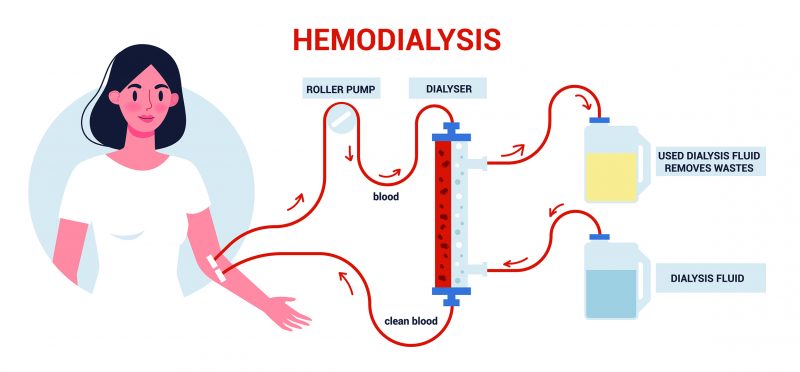As the kidneys gradually lose their ability to filter waste and excess fluid from the bloodstream, patients with CKD face a host of health challenges. One of the most effective treatments for advanced CKD is Hemodialysis, often referred to as HDF (Hemodiafiltration). This life-sustaining therapy has been instrumental in extending and improving the lives of countless individuals battling kidney disease. In this comprehensive blog, we will explore the intricacies of HDF dialysis, its benefits, the process involved, and its impact on the lives of patients.
Understanding Hemodialysis
Hemodialysis is a medical procedure that replicates the functions of healthy kidneys by removing waste products and excess fluid from the bloodstream. It is a crucial lifeline for individuals with advanced CKD, especially those in the later stages of the disease when the kidneys are unable to perform their vital filtration duties adequately.
The Hemodialysis Process
Vascular Access: Before starting hemodialysis, a vascular access point needs to be established.This is typically done by creating a fistula, graft, or inserting a central venous catheter. These access points allow blood to flow in and out of the dialysis machine.
Dialysis Machine: Patients are connected to a dialysis machine, which acts as an artificial kidney. Blood is drawn from the body, filtered through the machine, and then returned to the patient.
Dialysate Solution: In the machine, blood flows through a special filter called a dialyzer. Simultaneously, a dialysate solution, composed of electrolytes and purified water, is circulated on the other side of the filter. This solution helps remove waste and excess fluid from the bloodstream.
Filtration: As blood and dialysate solution pass through the dialyzer, waste products, toxins, and excess fluid are removed from the blood and discarded. This purified blood is then returned to the patient body.
Hemodiafiltration (HDF): A Step Ahead
Hemodiafiltration (HDF) is an advanced form of hemodialysis that offers several advantages over traditional hemodialysis. In HDF, a combination of diffusive and convective processes is used for waste removal. This results in more efficient clearance of larger toxins, reduced inflammation, and improved patient outcomes.
Key Benefits of HDF Dialysis:
HDF combines the principles of diffusion (the movement of solutes from higher to lower concentration) and convection (the movement of fluid) to remove a broader range of waste products, including larger molecules that may not be effectively cleared by standard hemodialysis.
Reduced Inflammation: By removing a wider spectrum of inflammatory substances, HDF can help reduce chronic inflammation often seen in CKD patients. It can have a positive impact on cardiovascular health.
Improved Blood Pressure Control: Many CKD patients struggle with hypertension. HDF’s superior fluid removal capabilities can contribute to better blood pressure management, reducing the risk of heart-related complications.
Enhanced Patient Well-Being: Patients undergoing HDF often report feeling less fatigued and more energetic compared to traditional hemodialysis. This improved quality of life is a crucial aspect of long-term CKD management.
Potential for Reduced Medication: With better toxin removal and improved overall health, some patients on HDF may require fewer medications, leading to cost savings and reduced side effects.
Challenges and Considerations
While HDF dialysis offers significant advantages, it’s essential to acknowledge the challenges associated with this treatment:
Infrastructure and Costs: HDF requires specialized equipment and trained medical staff. Expanding HDF services can be expensive, and not all healthcare facilities may have the resources to offer it.
Patient Suitability: Not all CKD patients are suitable candidates for HDF. Factors like vascular access, medical history, and overall health must be considered when determining the most appropriate dialysis modality.
Potential for Complications: As with any medical procedure, HDF carries a risk of complications, such as infection or clotting at the access site. These must be closely monitored and managed.
Conclusion
Hemodiafiltration (HDF) dialysis has emerged as a promising and more efficient alternative to traditional hemodialysis for patients with advanced Chronic Kidney Disease. By combining diffusion and convection, HDF offers improved toxin removal, reduced inflammation, and enhanced overall well-being for patients. While challenges such as cost and patient suitability exist, HDF represents a significant advancement in the treatment of CKD, offering hope and improved quality of life to those affected by this debilitating disease. As research and technology continue to evolve, HDF holds the potential to play an even more prominent role in the future of kidney disease management.consult Kalyani Kidney Care Hospital for best treatment.



